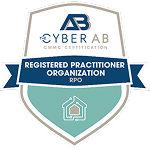Sophisticated cybercriminals target small to midsize businesses (SMBs) with ransomware, phishing, malware, insider threats, and other emerging threats. These can lead to severe disruptions to service clients and customers, financial losses, and reputational damages. Active protective measures such as regular professional risk assessments, awareness training, and dynamic cybersecurity strategies help to maintain business continuity and reduce likelihood of occurrence of negative impact from an attack.
SMBs are no longer just small fish in a big pond but prime targets for cybercriminals. Gone are the days when only large corporations had to worry about cyber threats. Now, even the smallest businesses can find themselves at the mercy of a sophisticated hacker. The alarming rise in cyberattacks on SMBs underscores a crucial point: no one is too small to be hacked. The qualities that make SMBs unique – agility, close-knit teams, and a focus on customer relationships – make them vulnerable.
As cybercriminals continue to evolve, so must SMBs’ security measures. Understanding the latest cyber threats and vulnerabilities is not just a technical issue; it’s a business imperative. This blog delves into the urgent and constantly changing landscape of cyber threats, highlights emerging vulnerabilities, and offers actionable insights for SMBs to protect themselves in an increasingly dangerous digital world.
Overview of Current Cyber Threats
Ransomware
Ransomware is a nightmare for any business, and SMBs are no exception. These attacks involve malicious software that locks businesses out of their own systems or encrypts their data, with cybercriminals demanding a ransom to restore access.
Phishing and Social Engineering
Phishing and social engineering attacks increasingly target SMBs, exploiting the trust and familiarity within smaller teams. Cybercriminals often pose as trusted contacts or authority figures, using sophisticated tactics to trick employees into revealing sensitive information or transferring funds. These attacks can lead to unauthorized access to critical systems, financial losses, and data breaches.
Malware (Zero-Day Exploits)
Malware, particularly zero-day exploits, continues to pose a significant threat to SMBs. These exploits are perilous because they take advantage of vulnerabilities unknown to software vendors, giving attackers a critical window to inflict damage before any patch is available.
Furthermore, the threat escalates when attackers daisy chain zero-day vulnerabilities, exploiting multiple flaws in succession. This tactic can overwhelm even the most robust security defenses, underscoring the need for SMBs to remain continuously vigilant and proactive in their cybersecurity efforts. The importance of ongoing vigilance cannot be overstated in these evolving threats, making it a crucial aspect of SMBs’ security strategies.
Insider Threats
Whether malicious or accidental, insider threats pose a unique and potentially severe challenge for SMBs. Smaller teams often mean trust is assumed rather than earned—however, insiders—whether disgruntled employees or careless staff—can cause significant damage. The potential impact of these insider threats underscores the need for SMBs to implement strict access controls, conduct regular audits, and foster a security-aware culture to minimize these risks.
Supply Chain Compromise
Supply chain compromises are a growing concern for SMBs, especially those that rely on third-party vendors. These attacks involve cybercriminals targeting less secure suppliers to infiltrate the more robust networks of larger organizations they provide services to, but SMBs are also at risk.
By exploiting weaknesses in a supplier’s system, attackers can gain unauthorized access to critical data and systems within the SMB’s network. This vulnerability is exacerbated by the interconnected nature of modern business operations, where a single weak link in the supply chain can lead to widespread damage. Furthermore, as SMBs increasingly depend on various vendors for essential services and technology, the potential impact of a supply chain breach grows.
Shadow IT
Shadow IT refers to the unauthorized use of technology within an organization—tools, software, or services not sanctioned by the IT department. This could include using personal email or a personal cloud storage account to store work files, or using unapproved software for work tasks.
While it often arises from employees seeking more efficient ways to complete tasks, shadow IT poses significant security risks. These unauthorized systems lack the necessary security controls, leaving critical business data vulnerable to cyberattacks. The impact on commercial operations can be severe, including compromised sensitive information, increased costs from managing unforeseen risks, and potential legal consequences.
Emerging Vulnerabilities
IoT (Internet of Things) Devices
IoT devices, from smart thermostats to security cameras, are becoming commonplace in SMBs. However, these devices often lack robust security features, making them easy targets for cybercriminals. SMBs should ensure that all IoT devices are secured with strong passwords, regularly updated, and segmented from the central business network
Cloud-based Security Vulnerabilities
As more SMBs migrate to the cloud, they face new security challenges. Misconfigurations in cloud settings are a common vulnerability, leading to data breaches and unauthorized access. To prevent such incidents, SMBs should invest in cloud security training, use multi-factor authentication, and regularly audit their cloud configurations.
Remote Work Security Vulnerabilities
The shift to remote work has opened new avenues for cyber threats. SMBs with remote employees must contend with the security risks of home networks and personal devices. Implementing virtual private networks (VPNs), securing endpoints, and providing remote work security training are essential to safeguard against these threats.
In the current business environment, where digital transformation is rapid, the proliferation of shadow IT in a remote work setting demands that organizations implement stringent oversight and foster open communication channels to ensure that all technology use aligns with security and compliance standards.
Artificial Intelligence (AI) and Machine Learning (ML) Vulnerabilities
AI and ML tools offer enhanced efficiency and advanced capabilities for SMBs. However, they also introduce newer and more sophisticated risks that threat actors can exploit by bypassing security controls to manipulate sensitive data, or launch more sophisticated and targeted attacks. For instance, attackers might use ML algorithms to identify and exploit weaknesses in AI-driven security systems or to create targeted phishing campaigns.
Protective Measures To Consider
Risk Assessment and Management
Regular risk assessments are vital for identifying threats and vulnerabilities and implementing appropriate security measures to mitigate. SMBs should leverage tools and resources designed specifically for their scale to conduct these assessments effectively.
Security Awareness Training
Building a security culture within the organization starts with comprehensive security awareness training. Focus areas should include, but not be limited to:
- Phishing recognition.
- Access control management.
- Reporting suspicious activities.
- Methods of verifying requests for sensitive information via alternative communication channels.
Implementing Robust Security Policies
Every SMB must establish clear security policies covering key areas such as data protection, access control, and incident response. These policies should include detailed procedures, define roles and responsibilities, and be regularly reviewed and updated to adapt to evolving threats and technological advances. This dynamic approach will help SMBs protect their assets and defend against emerging cyber threats.
Leveraging Managed Security Services
Collaborating with a Managed Security Service Provider (MSSP) can offer SMBs invaluable access to advanced security expertise and cutting-edge tools that might otherwise be out of reach. MSSPs provide continuous threat monitoring and rapid incident response and ensure compliance with evolving security standards, thus enhancing overall protection.
Furthermore, they bring specialized knowledge that helps anticipate and mitigate potential risks before they escalate. By leveraging MSSPs, SMBs can focus on their core business operations while benefiting from an extensive security strategy tailored to their needs. This strategic relationship fortifies their defenses, helps them combat emerging threats, and maintains a robust cybersecurity posture.
Conclusion
As cybercriminals refine their tactics and exploit emerging threats and vulnerabilities, SMBs must adapt their defenses to foster an efficient yet proactive security posture. Indeed, the rise in targeted attacks—from ransomware and phishing to sophisticated malware—highlights the urgent need for SMBs to prioritize cybersecurity. Proactive measures such as regular risk assessments, comprehensive employee training, and robust security policies are no longer optional but essential.
Being prepared is crucial in this increasingly sophisticated threat landscape. Therefore, following the recommendations outlined in this blog, SMBs can effectively mitigate the risk of severe disruptions and financial losses while enhancing their overall resilience. Safeguard your business today to ensure continued success amidst the rapidly evolving cyber threat environment.








